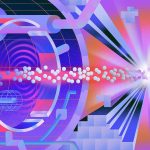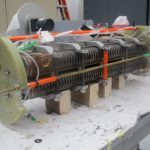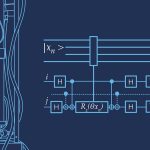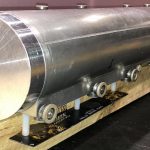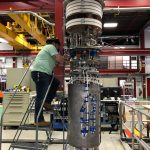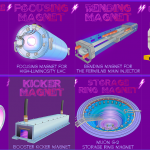magnet
From CERN Courier, Jan. 13, 2021: The US LHC Accelerator Upgrade Project, led by Fermilab scientist Giorgio Apollinari, is now entering the production phase in the construction of magnets for the upcoming High-Luminosity LHC, an upgrade of the current Large Hadron Collider. U.S. labs are building magnets that will focus beams near the ATLAS and CMS particle detectors.
From Bulgarisches Wirtschaftsblatt, Nov. 11, 2020: Während die Wissenschaftler im Fermi National Accelerator Laboratory des US-Energieministeriums auf die mit Spannung erwarteten ersten Ergebnisse des Muon g-2-Experiments warten, setzen die mitarbeitenden Wissenschaftler des Argonne National Laboratory des DOE weiterhin das einzigartige System ein, das das Magnetfeld im Experiment mit beispielloser Präzision abbildet.
Fermilab scientists have broken their own world record for an accelerator magnet. In June, their demonstrator steering dipole magnet achieved a 14.5-tesla field, surpassing the field strength of their 14.1-tesla magnet, which set a record in 2019. This magnet test shows that scientists and engineers can address the demanding requirements for a future particle collider under discussion in the particle physics community.
From Lawrence Berkeley National Laboratory, June 17, 2020: While COVID-19 risks had led to a temporary halt in fabrication work on high-power superconducting magnets built by a collaboration of three national labs for an upgrade of the world’s largest particle collider at CERN in Europe, researchers at Berkeley Lab are still carrying out some project tasks. Fermilab scientist Giorgio Apollinari, head of the U.S.-based magnet effort for the HL-LHC, is quoted in this piece.
From Semiconductor Engineering, April 6, 2020: Fermilab, Brookhaven National Laboratory and Lawrence Berkeley National Laboratory have built an enormous superconducting magnet — one of 16 — that will be used in the High-Luminosity Large Hadron Collider particle accelerator project at CERN in Europe.
Missing March Madness? Let Fermilab fill a small part of the void created in these times of social distancing and shelter-in-place. Participate in Fermilab’s sendup of the NCAA tournament: March Magnets. Learn about eight different types of magnets used in particle physics, each with an example from a project or experiment in which Fermilab is a player. Then head over to the Fermilab Twitter feed on March 30 to participate in our March Magnets playoffs.

